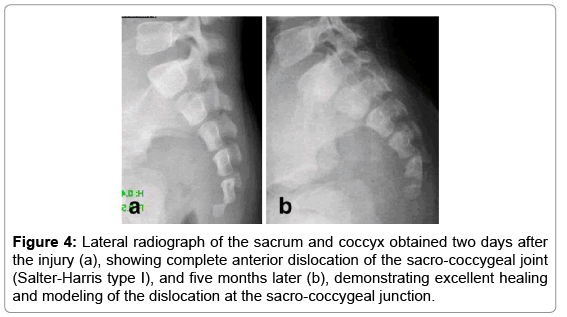

Encouragingly, the vast majority (90%) of patients respond favorably to conservative care. There are a number of conservative treatment options available for coccydynia. Magnetic resonance imaging (MRI) can also be considered when x-rays are normal, pain persists, and/or in cases where infection, malignancy, or other soft tissue abnormalities are of concern. X-rays can also be obtained in standing and sitting views to evaluate for dynamic sacrococcygeal instability. Notably, digital rectal examination allows for palpation of the anterior coccyx and may be helpful in evaluating the degree of coccygeal mobility.Īn x-ray of the coccyx is typically the initial image of choice as it can evaluate for fracture, malalignment/dislocation, and joint degeneration (i.e. Careful palpation of the adjacent structures, such as the para-coccygeal muscles and ligaments, and ischial regions can help evaluate for other causes of tailbone pain. Pain should be reproduced with focal external palpation of the posterior aspect of the coccyx. DiagnosisĪ focused external examination of the coccyx should be performed inspecting for any rash, discharge, or fistula (abnormal opening) which could suggest an underlying infection or cyst. Pain may also worsen with bowel movements or during sexual intercourse. 7 Transitional movements, such as moving from a seated to standing position can also be painful and may indicate dynamic sacrococcygeal instability. Often pain is worse when sitting on hard surfaces and with leaning back while in a seated position which places even more pressure directly over the coccyx. Pain usually worsens with sitting or any activity that causes direct pressure over the bottom of the spine. Coccydynia pain is typically well localized to the tailbone and does not radiate into the legs or through the pelvis. Tailbone pain can vary from a dull ache to an intense stabbing pain. 5,6 Other rare but serious causes of tailbone pain include infection and malignancy of the coccyx itself or surrounding tissues. Abnormal sacrococcygeal joint movement (both hyper- and hypomobility), osteoarthritis, and bone spurs can all result in coccygeal pain. In addition, internal trauma associated with childbirth is another cause of coccydynia. 5 Repetitive minor trauma, such as prolonged sitting with poor posture or sitting on hard or unsupportive surfaces can also increase the risk of developing tailbone pain. This can occur from a fall onto the buttocks causing the coccyx to be bruised, broken, or dislocated. The most common cause of coccydynia is direct external trauma to the tailbone. 2 Elevated body mass index associated with obesity may affect how a person sits and the proportion of weight placed on the coccyx.

Coccydynia is five times more common in females than in males. Risk factors for developing coccydynia include female sex and obesity. 1 Risk Factors and CausesĪlthough the exact prevalence of coccydynia is unknown, tailbone pain is often encountered in the clinical setting and can be debilitating when severe. Additionally, the ganglion impar, a cluster of sympathetic nerve fibers located in close proximity to the sacrococcygeal joint, appears to be involved in various forms of sympathetically maintained pain in the pelvic region including coccydynia. 1 The nerves of the coccyx include the somatic nerves, which carry pain and other sensations to the brain. The coccyx serves an important role as the attachment site for multiple muscles, ligaments, and tendons that support the pelvic floor and provide weight distribution, stability, and balance when sitting. The coccyx is typically composed of three to five fused (or semi-fused) bony segments and connects to the sacrum via the sacrococcygeal joint. Tailbone pain, also called coccydynia or coccygodynia, is pain associated with the coccyx – the small triangular shaped bone at the bottom of the spinal column just below the sacrum.


 0 kommentar(er)
0 kommentar(er)
